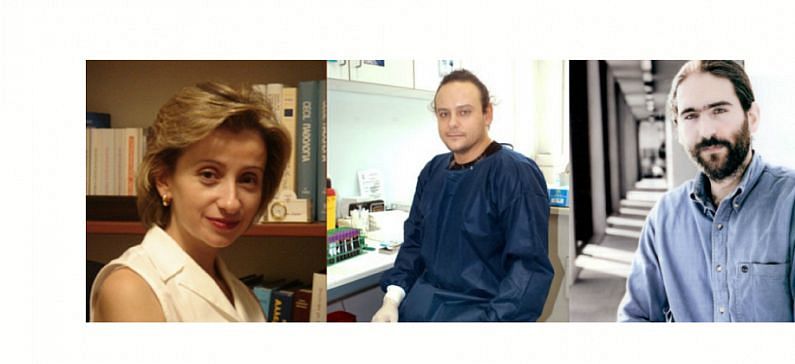
Three Greek scientists find ancient viruses in human DNA
Ancient viruses may be lurking in humans’ DNA after scientists noted a strange protein in pregnant women, according to a September study. A protein dubbed HEMO has been found in unborn babies, but the gene originally came from a virus which may have infected mammalian ancestors more than 100 million years ago, according to the study “Roles of Endogenous Retroviruses in Early Life Events,” the New York Times reported.
Aris Katzourakis, a virologist at the University of Oxford, Gkikas Magiorkinis of the University of Athens and Pagona Lagiou, Adjunct Professor of Epidemiology of the Harvard T.H. Chan School of Public Health, recently published a commentary in the journal Trends in Microbiology in which they explored the possibility that viral genes that produce proteins like Hemo are affecting our health in a variety of unexpected ways.
Some of our ancient viruses may be protecting us from disease; others may be raising our risks for cancer, among other conditions. “It’s not an either-or — are these things good or bad? It’s a lot more complicated than that,” Dr. Katzourakis said in an interview. “We’re barely at the beginning of this research.”
Viral DNA makes up approximately 8 percent of the human genome — or roughly 100,000 pieces — which scientists believe can impact humans’ health both positively and negatively. The study researched whether these viral genes had an affect on humans’ genetic makeup, specifically with regard to the HEMO protein.
Most of our viral DNA comes from one group in particular: retroviruses, a group that includes HIV. A retrovirus invades a host cell and inserts its genes into that cell’s DNA. These viral genes co-opt the cell’s machinery, using it to make new viruses that escape to infect more cells.
Some endogenous retroviruses are unique to humans, but others are found in a variety of species. In January, Dr. Katzourakis was a co-author on a study showing that one retrovirus common in mammals also is present in fish like cod and tuna. Retroviruses, that study indicated, were invading our marine ancestors 450 million years ago — or even earlier. Just as we have defenses against free-living viruses, we have also developed defenses against endogenous retroviruses. Our cells can coat their DNA with molecules that suppress viral genes, for example.
The early embryo is a hotbed of activity for endogenous retroviruses, recent studies have shown. To understand why embryonic cells make viral proteins, scientists have run experiments to see what happens when viral genes are silenced. These experiments suggest that viral proteins help the embryo develop a variety of tissues. Early on, the cells in an embryo can turn into any tissue. As these stem cells divide, they can lose this flexibility, committing to becoming one kind of cell or another. After that, cells typically shut down their viral genes. Viral proteins appear to help keep stem cells from losing this potential. And Gkikas Magiorkinis of the University of Athens has speculated that this feature might have a sinister origin. Viruses might have exploited embryos to make more copies of themselves. By keeping their hosts as stem cells for longer, the viruses were able to invade more parts of the embryo’s body.
“When the host grows, it will have copies in the retrovirus in most of its cells,” Dr. Magiorkinis said.
This strategy may do more than create more viruses. Stem cells can produce eggs and sperm in embryos. The viruses may be raising their odds of getting into the next generation. In other words, early embryos may have come to depend on the tricks viruses use to manipulate them. “We’re exploiting a property that has evolved for the virus’s benefit,” Dr. Katzourakis said.
Read also:







